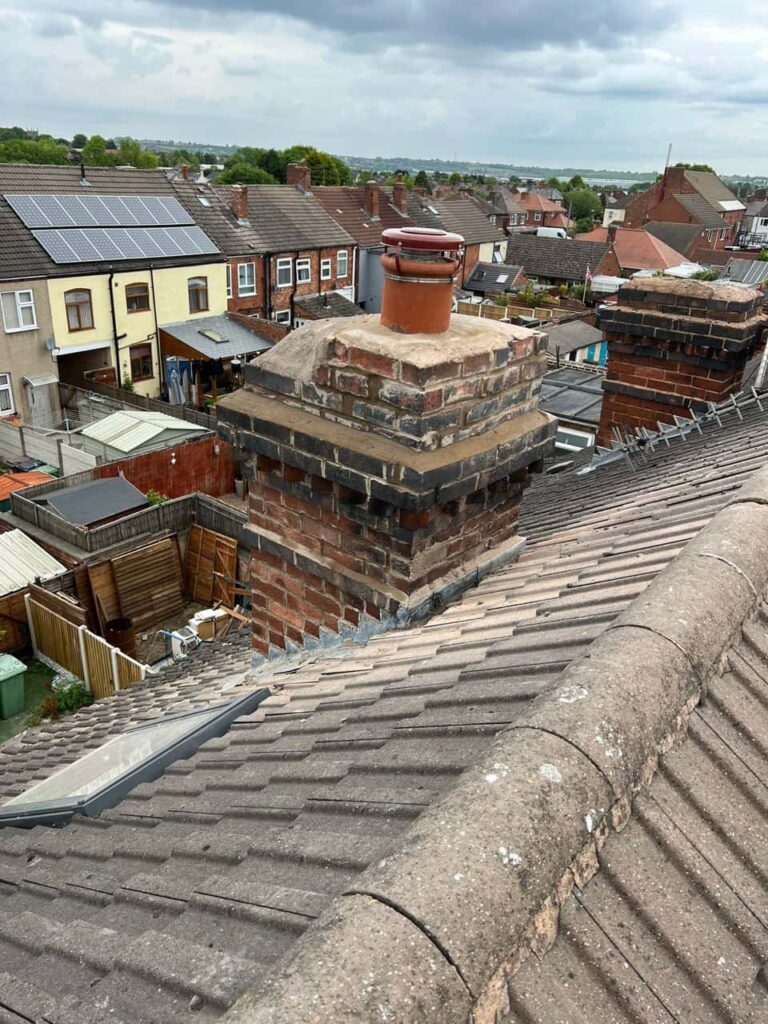When you discover damp patches or water stains inside your home, the first question that comes to mind is where the leak is coming from. In many cases, the problem lies either with damaged roof tiles or faulty flashing. While both can cause similar symptoms, the source of the issue determines how it should be repaired. At Horley Roofing Repairs, we frequently help homeowners in Horley and across Surrey identify and resolve leaks efficiently — ensuring their roofs stay watertight and long-lasting.
Understanding the Role of Tiles and Flashing
To know where the problem originates, it helps to understand how tiles and flashing function.
- Roof tiles form the main protective surface of your roof. They are designed to overlap and direct water safely towards the guttering system. A single cracked, slipped, or missing tile can disrupt this process, allowing rainwater to seep underneath.
- Flashing, on the other hand, is the thin sheet metal used around joints and roof features such as chimneys, skylights, or valleys. Its purpose is to seal these vulnerable areas against water ingress. When flashing deteriorates or becomes loose, water can find its way into the roof structure.
Although both play crucial roles in keeping your property dry, the signs of damage can differ — and recognising them early can save you from more serious issues later.
Common Signs of a Leak Caused by Tiles
If your roof leak originates from damaged or missing tiles, you may notice one or more of the following:
- Visible damage to the tiles – Cracks, chips, or tiles that have slipped out of place are often visible from ground level or with binoculars.
- Localised damp patches – Water stains directly below a particular section of the roof may indicate water getting through broken tiles.
- Leaks after heavy rainfall – If water only appears during or after long periods of rain, the problem is likely related to the roof covering rather than internal condensation.
- Loose debris or moss buildup – Accumulated debris can cause water to sit on the tiles, seeping into small gaps and increasing the risk of leaks.
Tiles can deteriorate naturally over time, but strong winds, frost damage, or falling branches often accelerate wear and tear.
Signs the Leak May Be from Flashing
Leaking flashing can be trickier to identify, as the water may travel before becoming visible indoors. Look for these clues:
- Damp patches near roof joints or features – If moisture appears around chimneys, skylights, dormer windows, or where the roof meets a wall, the flashing may be failing.
- Rust or corrosion – Metal flashing can corrode over time, leading to small holes or cracks that allow water through.
- Gaps or lifting edges – Flashing that has come loose due to weather exposure or poor adhesion leaves gaps for rainwater to enter.
- Recurrent leaks in the same spot – Even after minor repairs, if water keeps returning, the flashing is often the culprit rather than the tiles themselves.
Professional roofers such as Horley Roofing Repairs can pinpoint the source of the leak by carrying out a detailed inspection, ensuring the correct repair is made first time.
How Professionals Diagnose Roof Leaks
Roof leaks can be deceptive. Water often enters at one point and travels along rafters or insulation before appearing elsewhere inside the property. To accurately determine whether the flashing or tiles are to blame, an expert roofer will:
- Conduct a visual inspection from the ground and roof level.
- Check the condition of tiles and underlay for cracks, displacement, or wear.
- Examine flashing around chimneys, valleys, and vents for splits or corrosion.
- Use moisture detection tools to trace the water’s path.
This process ensures that the exact cause of the problem is identified before any repairs are undertaken.
Preventing Future Leaks
Prevention is always better than repair when it comes to roofing. Homeowners can protect their properties by:
- Scheduling regular roof inspections, particularly after storms.
- Keeping gutters and valleys clear to allow proper drainage.
- Ensuring flashing and sealant are checked as part of routine maintenance.
- Replacing damaged tiles promptly to stop water ingress before it worsens.
Consistent upkeep helps extend the lifespan of your roof and reduces the likelihood of costly water damage.
Conclusion
Whether your roof leak originates from damaged tiles or failing flashing, identifying the source quickly is crucial to preventing further issues. While both components serve to protect your home from the elements, each requires a specific approach to repair.
For homeowners in Horley and throughout Surrey, Horley Roofing Repairs offers expert roof inspections and dependable repair solutions to ensure your property remains dry, secure, and structurally sound — no matter what the British weather brings.
Call us on: 01293 222 197
Click here to find out more about Horley Roofing Repairs
Click here to complete our contact form and see how we can help with your roofing needs.

